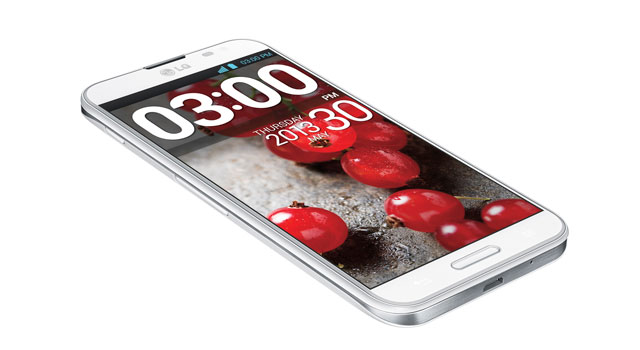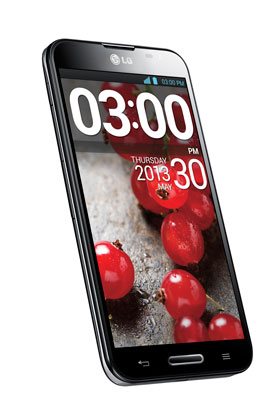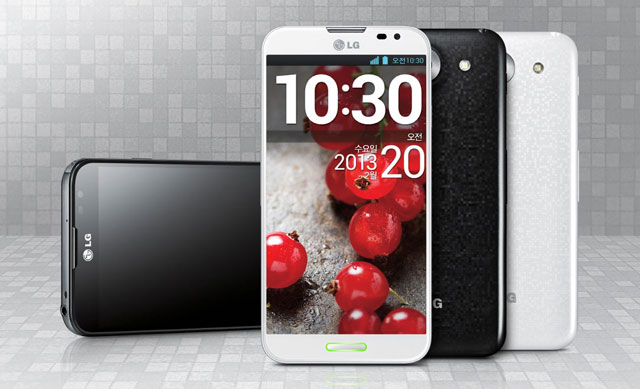
It must be tough being LG Electronics sometimes. Despite building excellent appliances, televisions and mobile devices, the biggest name in electronics from Korea remains its main rival, Samsung.
LG remains intent on outdoing Samsung, even if that means mimicry combined with specification one-upmanship, as in the case of the Optimus G Pro over its rival’s Galaxy Note 2.
The G Pro is part of the growing number of devices the media has dubbed “phablets” — products with displays larger than five inches designed to perform the dual role of mobile phone and tablet computer.
In fact, the G Pro looks uncannily like Samsung’s Note 2 — clearly LG is taking the battle with Samsung very seriously indeed — except where Samsung settled on a 720p 5,5-inch display, LG has upped the ante with a 5,5-inch 1080p display. Given its size, that means the G Pro offers a pixel density of around 401ppi. In short, it’s absolutely gorgeous.
In order to power the G Pro’s enormous display, LG has used a meaty 3 140mAh battery. That’s substantial, but because there’s so much more for it to do, don’t expect more than a day of heavy use out the G Pro. The Note 2 has a 3 100mAh battery and also doesn’t make it through more than a day’s use.
 Like all other large phones, the 172g G Pro takes some getting used to, especially if you’ve come from a 4-inch display or smaller. It’s best used with two hands. Still, it makes going back to a smaller device difficult once you get used to being able to view an entire Web page without having to zoom or scroll constantly.
Like all other large phones, the 172g G Pro takes some getting used to, especially if you’ve come from a 4-inch display or smaller. It’s best used with two hands. Still, it makes going back to a smaller device difficult once you get used to being able to view an entire Web page without having to zoom or scroll constantly.
Like the Note 2, the Optimus G Pro has a physical home button beneath its enormous display. It also has capacitive buttons flanking the home button for going back and to bring up options.
Hardware wise, the most obvious difference between LG and Samsung’s phablets is the latter ships with a stylus, the S-Pen. The stylus has niche appeal, but those who use it swear by it. And it does set the Samsung phone apart in a market segment that’s filling up rapidly.
Another difference between the two products is the LG has support for infrared communications. It’s a great feature when paired with universal remote control apps.
Unfortunately, LG has followed Samsung’s lead when it comes to cheap and nasty plastic rear covers, though it goes one step further by covering the G Pro’s cover in a dreadful, glossy, pixellated pattern.
LG has kept its meddling with Android — the device ships with version 4.1.2 — to a minimum. One of the features we really do like, though, is the QSlide Apps tray in the notification window. This allows you to open apps while in another app so you can send a message while watching a video or make notes while browsing the Web.
The G Pro has a quad-core 1,7GHz processor, while its direct rival has a quad-core 1,5GHz model. Given that LG is later to market with the G Pro, this is understandable. Being a top-end device, we expected performance to be excellent and it is. No matter what we threw at the G Pro, it kept responding smoothly.
Being later to market also means LG could outstrip Samsung on other specifications. The Note 2 has an 8-megapixel camera; the G Pro’s camera has 13 megapixels. Does that mean better pictures? Not really. You’d be hard pressed to tell the images from them apart beyond file size.
In another crib from or nod to Samsung, the G Pro includes the ability simultaneously to shoot video with both the primary and secondary cameras. Samsung made a huge song and dance about the feature when it introduced it on the Galaxy S4, but we’re still having a hard time thinking of instances where this would actually be useful.

As top-end devices perfectly suited to media consumption, it’s great that both the LG and the Samsung support microSD cards up to 64GB where so many phones tap out at 32GB.
Price wise, there’s not that much in it between the G Pro and the Note 2. When it arrived in South Africa, the Samsung was priced at R7 400 (online stores now have it for less than R6 200), while the LG has a recommended prices of R7 999.
When it was launched, the Note 2 was the best phablet on the market. LG has unseated it with the G Pro, but with Samsung due to release the Note 3 in early September, the scoreboard may soon again tick over in favour of LG’s rival.
If you’re after a phablet and a stylus isn’t important to you, the G Pro is an excellent device and beats the Note 2. But you’d probably be better off waiting to see what Samsung has up its sleeve before committing. — (c) 2013 NewsCentral Media




